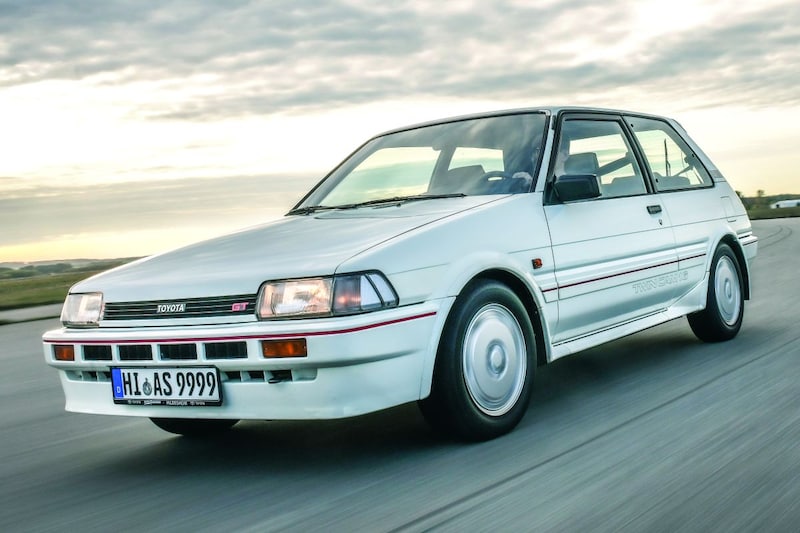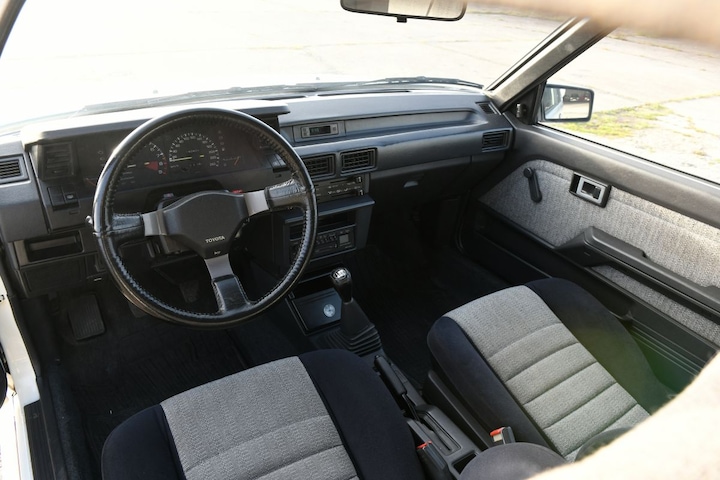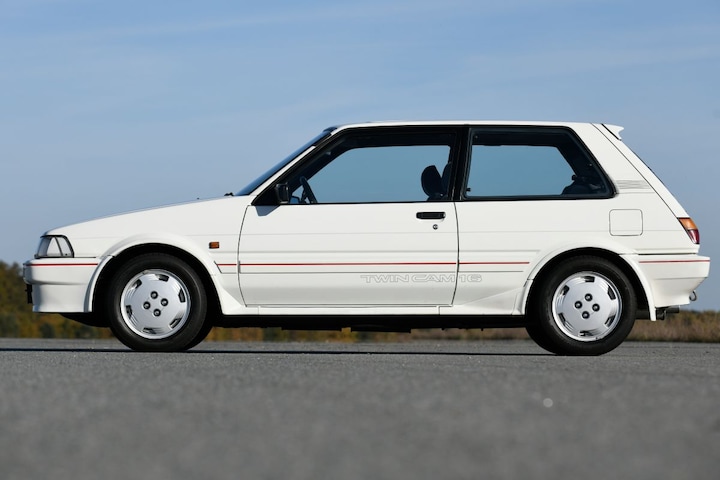The 16V era

Forty years ago, the hot hatchback really became hot. In the 1970s, the front-wheel drive compact middle class car with a powerful engine and sporty decoration plus a modified chassis emerged, in the 1980s the multi-valve engine gave the hot hatch wings. The 16V, thanks to four valves per cylinder! In any case, the Japanese brands were early, often earlier than the European brands with their sixteen-valve engines. In 1985, Toyota put the Corolla GT 16V in the showrooms, the Volkswagen Golf GTI 16V was already shown that year, but did not appear until 1986. How does that first hot hatchback from Toyota drive?
In any case, the appearance of the fast Corolla is nicely 80s: white bumpers, red decorative stripes all around. The Japanese became increasingly better at building cars that we also liked and Toyota in particular gave full throttle to conquer market share in Europe. With the reliability of the models as a trump card, but also with sporty models such as the MR2, the Celica T16 and the Corolla Coupé (AE86), which appeared on the scene in 1983 with rear-wheel drive, just when the regular Corolla (E8) was introduced with front-wheel drive for the first time. popped up. Today we put a front-wheel drive Corolla through its paces, in this case powered by the engine that also served in the brand’s three sports cars. Two overhead camshafts, a timing belt, an aluminum cylinder head and an electronic engine management system: an 8-bit microprocessor (how cool that sounded!) controls the injection, ignition timing and the control of an intake air control valve in the intake ducts. The valve remains closed at low engine speeds so that the gasoline-air mixture is distributed evenly; at 4,650 rpm it opens and the intake volume is increased.

Let’s try what that does to the power, the power source is up to temperature. The sporty Corolla accelerates enthusiastically and where many eight-valve engines struggle, its engine continues to roar. The power of 121 hp propels the light car – it weighs just over a ton – to 100 km/h in about nine seconds. The gear lever has a long stroke, but shifts wonderfully precisely with little play. Push the lever, which is turned towards the driver, a little to the right and the short fifth gear (approximately 3,400 rpm at 100 km/h) is engaged. The height-adjustable leather steering wheel with metal spokes now needs to be put to work, because the slalom and moose test are now on the program. The indirect steering requires a lot of turning of the steering wheel, the Corolla goes deep into the springs when rounding the pylons. The fact that the rear steps aside relatively quickly is partly due to the older shock absorbers among our test sample, but not only because of that, as old tests make clear.

The interior has a lot to offer in terms of equipment and details, such as the ignition lock that is illuminated when the door is opened. Many parts feel light rather than high-quality, from the thin doors to the ventilation grilles – but it didn’t cost the world. No one offered more valves for less money than Toyota in the mid-80s. That was part of his character. Light, fast and cheap: this Corolla is a very nice car and even rarer today than in the two years it was available new. On the website we find another review from someone who owned one, written in 2006.


Twin Cam 16 is written on the side, which stands for a double camshaft and sixteen valves. Honda called it DOHC, double overhead cam shaft. Technology that in those years could be proudly read on the cars in large letters.
– Thanks for information from Autoweek.nl